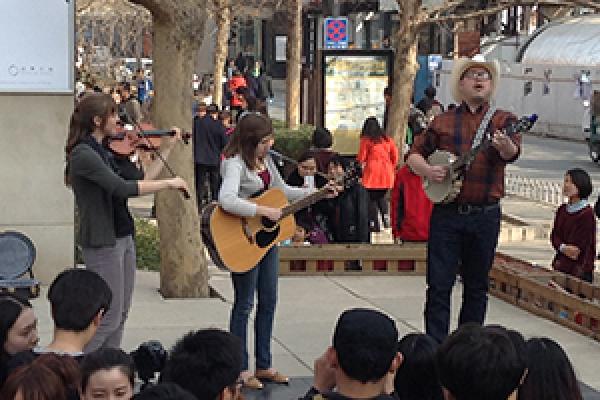Researchers from Ohio State and the UK Study How Music Brings People Together

Cognitive ethnomusicologists at The Ohio State University collaborated with researchers from Durham University in the UK to conduct leading research, published in early April, about how music brings people together (the social power of music).
Researchers at Ohio State included Udo Will, Ira Wertheim and Eric Berg from the School of Music; their UK colleagues were Martin Clayton and Laura Leante. Their findings were published in the international, peer-reviewed online journal Plos One.
“Music has the wonderful power of bringing people together, be that at rituals, ceremonies, or concert performances,” said Will. “Music seems to serve as a unifying force by bringing about a sense of shared experience. But what is it in the music that makes this happen?”
The researchers investigated this question by analyzing the bodily responses of listeners to regularly timed (music with a ‘strong beat’) and to irregularly timed music (with a weak or no obvious beat). As stimuli they used introductory sections of Indian classical music that contained both types of music.
What they found was that listeners showed very regular motor responses to both types of music. In the case of irregularly timed music each listener showed a motor response that was related to the individual subjective tempo, so each listener had her/his own response tempo that was not related to that of other listeners.
However, when the timing of the music reached a certain degree of regularity, listeners' responses started to lock in with the music, a phenomenon known as “entrainment.” As a result of this entrainment the motor responses across listeners became unified and related: They started to respond at the same tempo, or if it was not the same tempo it was a tempo that was compatible with that of others (for instance, their tempo was half or twice as fast as that of others). This experience, expressed by bodily movements and attention, is shared with that of other listeners.
“This research indicates that our responses to music are not in a simple, direct way ‘caused’ or determined by certain features of the music; instead they result from an interaction of who we are at the time of listening and what the music has to offer us,” Will added. “Music with sufficiently regular timing leads to entrainment and the ensuing shared experience, due to a combined motoric and attentional synchronization with others, may promote social cognition and empathy. This may well be one of the important factors that shape the social power of music.”
